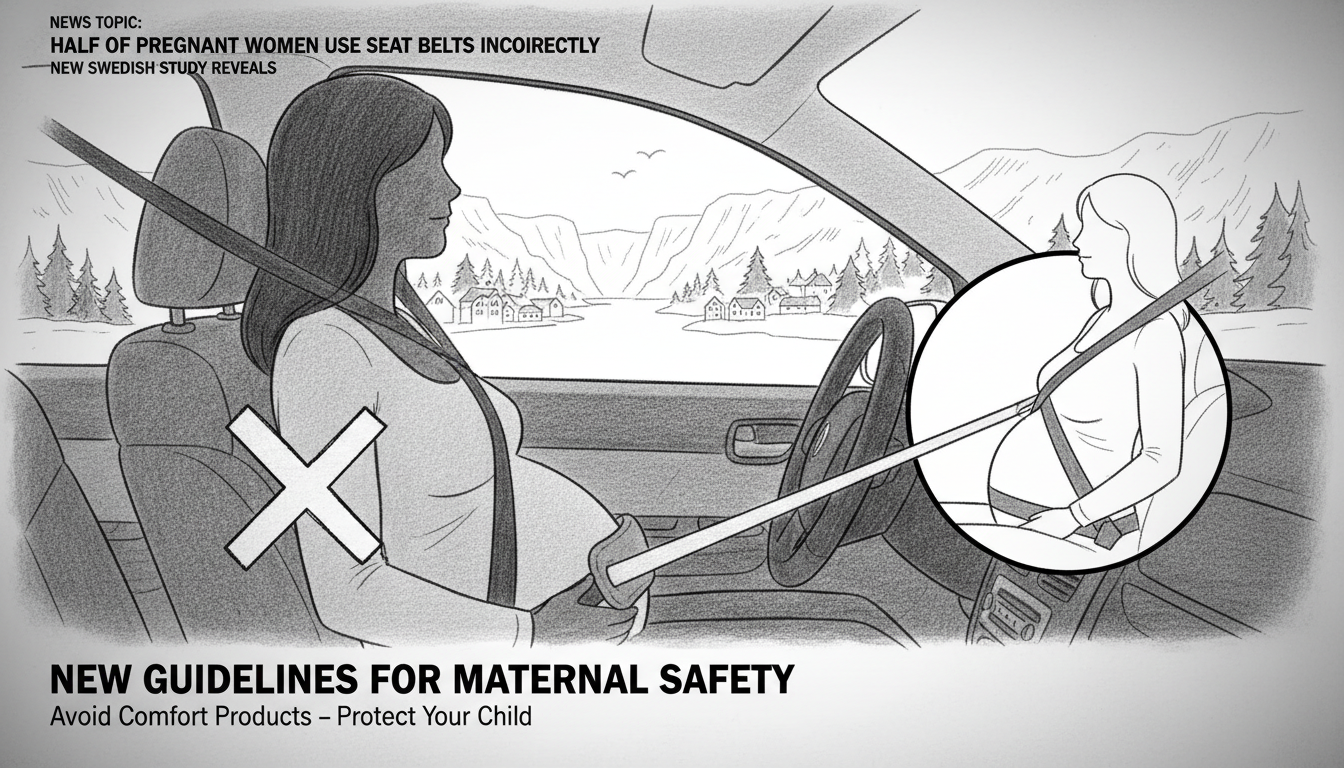Nearly half of all pregnant women in Sweden use their seat belts incorrectly according to new national recommendations. This poses serious safety risks for both mothers and unborn children during vehicle accidents.
The National Traffic Safety Association collaborated with researchers to develop Sweden's first official guidelines for seat belt use during pregnancy. Proper belt placement makes a crucial difference in crash survival rates.
Malin Lundgren from the traffic safety organization explained the correct technique. The lower belt section should rest against the hip bones. It must not slide up onto the stomach. Pregnant women should tighten the belt properly. Winter clothing creates additional challenges. Bulky jackets can prevent proper belt positioning.
The recommendations specifically warn against using aftermarket products marketed to pregnant drivers. These devices claim to improve comfort by redirecting the belt away from the belly. Safety researchers conducted crash tests with these products. They found the accessories dramatically reduce protection in collisions.
Helena Stigson, a traffic safety researcher, confirmed the dangers. These comfort solutions might feel better during normal driving. They fail completely during actual crashes. The tested products significantly compromised safety for both mother and child.
This issue affects thousands of women annually across the Nordic region. Sweden maintains some of Europe's strictest traffic safety standards. Yet critical pregnancy safety information still fails to reach many expectant mothers. The new guidelines aim to close this dangerous knowledge gap.
Proper seat belt use becomes increasingly important as pregnancy advances. The growing belly changes how traditional safety systems function. Many women receive conflicting advice from various sources. Some mistakenly believe looser belts protect the baby better. The opposite proves true in crash testing.
Swedish hospitals and prenatal clinics will distribute the new guidelines. Midwives and healthcare providers will receive special training. The campaign targets all pregnant drivers and passengers. Public transportation usage varies across Sweden's vast geography. Most families rely on cars for daily transportation.
This initiative reflects Sweden's broader Vision Zero approach to traffic safety. The country aims to eliminate all traffic fatalities and serious injuries. Pregnancy safety represents a previously overlooked component. The new research fills critical gaps in maternal protection standards.
International readers should note that Swedish seat belt laws apply equally to all occupants. Fines for improper use can reach substantial amounts. Insurance companies may reduce payouts for injuries resulting from incorrect belt positioning. The same principles likely apply in other Nordic countries with similar safety cultures.
Expectant parents should consult healthcare providers about proper vehicle safety. Car manufacturers provide specific guidance for pregnant occupants. The middle rear seat often offers the safest positioning when available. Regular seat belt adjustments become necessary as pregnancy progresses.

